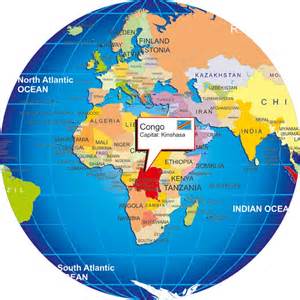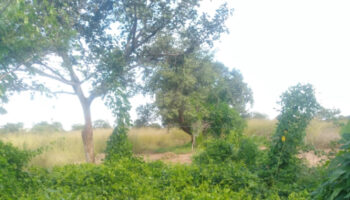The last time your favourite forum tackled business in DRC, we mainly concentrated on an interview from a ZBIN official contact who is based in Kinshasa, Ms Nothando Mpofu and she gave you important information about DRC. A number of Zimbabweans are already in DRC especially professionals such as engineers. The interview is very important for any member interested in travelling to DRC and not have sufficient information. We urge you to go to our search page and look for it. On the forum we also posted a market survey done by ZIMTRADE which looks at opportunities in the resource rich country.
Today we feature another DRC article and look at the big picture or helicopter view of the DRC and this information is sourced from www.export.gov
Last Published: 8/8/2016
- The Democratic Republic of the Congo’s (DRC) rich endowment of natural resources, large population, and strategic location in Central Africa make it a potentially rewarding market for U.S. companies. However, the DRC’s commercial and investment climate remains challenging.
- Following decades of economic instability due to fiscal mismanagement, corruption and conflict, the government of the Democratic Republic of Congo (GDRC) implemented economic reforms aimed at creating sustainable growth, controlling inflation, maintaining the stability of the macroeconomic framework, reducing the weight of external debt and rehabilitating infrastructure. GDRC efforts from 2001 to 2014 yielded some improvement, but significant challenges remain.
- The DRC’s economy returned to growth in 2010 following a significant economic slowdown in 2008 and 2009 as a result of the global financial crisis. Gross Domestic Product (GDP) growth more than doubled from 2.9 percent in 2009 to 7.1 percent in 2010. By 2014, GDP growth reached 8.9 percent, before declining to 7.7 in 2015. Lower commodity prices and exports reduced projected growth for 2016 to around 5 percent.
- Fiscal reforms implemented in 2015 helped stabilize inflation and the Congolese Franc (CDF), keeping inflation below 2 percent despite drops in commodity prices. Between 2011 and 2015, the CDF held steady against the dollar, trading at roughly USD 1 to CDF940. The CDF began to lose ground against the dollar in April 2016 and traded at CDF958 per USD 1 in June 2016. The DRC reached the Highly-Indebted Poor Countries (HIPC) completion point in 2010, having implemented necessary policy measures (“triggers”). HIPC debt relief alleviates over USD 11 billion of the DRC’s external debt burden, freeing resources for spending on priority programs.
- The DRC’s primary sectors, agriculture and natural resources, collapsed during the civil war years of the 1990s, but have seen a strong recovery over the past decade. Today, economic growth in the DRC is driven mostly by extractive industries, followed by manufacturing, public works, and agriculture. A substantial portion of the DRC’s economic activities are dominated by the informal sector. According to a 2012 study by the National Institute of Statistics, the DRC’s informal sector represents 88.6 percent of total economic activity. The DRC’s manufacturing industry all but disappeared in the 1990s during the final years of Mobutu Sese Seko’s rule. Most consumer goods are imported, largely from China, which account for nearly a quarter of all imports.
- The country has three main economic hubs focused around large population centers with large commercial or industrial bases. These are:
- The provinces of Kinshasa and Kongo Central, formerly the province of Bas Congo: Kinshasa is the DRC’s most populous city and its political and economic capital. Kinshasa is home to both the seat of government and the headquarters of the vast majority of agencies and institutions. It is a vibrant economic hub; most foreign companies operating in the DRC maintain a presence in Kinshasa; Congolese businesses tend to have their corporate headquarters in the city. Kinshasa is the third largest city on the African continent, with an estimated population of over 5.5 million inhabitants in the city and 10 million in its urban agglomeration. Kongo Central borders Kinshasa province’s western flank; to the south, Kongo Central shares a border with Angola and to the North, with the Republic of Congo. Kongo Central is the only province in the DRC with direct access to the sea. Matadi, approximately 170 miles (273km) southeast of Kinshasa, is the capital and largest city in the province, and is home to the only seaport in the country. Kinshasa and Matadi are connected by a meter gauge portage railway that recently underwent substantial overhauls as well as a paved two-lane road. Though the Congo River flows between Kinshasa and Matadi, the stretch connecting the two is unnavigable.
- Haut-Katanga and Lulabala provinces: These two provinces form the southern economic hub. Haut-Katanga and Lulabala provinces occupy the southern half of the former Katanga province bordering Angola and Zambia. Lubumbashi, Congo’s second largest city is located on one of the world’s largest copper deposits. Today, the region is home to numerous domestic and internationally owned mines. Unlike Kinshasa, Lubumbashi and a number of other key cities in the Lulabala and Haut-Katanga provinces are connected to the southern African rail network.
- North Kivu, South Kivu, Ituri, Bas Huele, Haut Huele, and Tshopo provinces: This area of economic activity, from the cities of Bukavu and Goma on the Rwandan border, to the river port city of Kisangani to the West and the gold mines in Bas Huele and Ituri, forms the third economic hub of the region. The area faces a chronic instability, the by-product of a continuing low-intensity conflict between various armed factions fighting the GDRC, each other, and cross border attacks from Rwanda. Despite difficult conditions, the region is home to a number of industrial and artisanal mines extracting cobalt, gold, and diamonds, as well as an agricultural sector that is increasingly exporting its products.
- The DRC seeks to promote and participate in regional integration and trade. The GDRC is a member of the African Union, Southern African Development Community, Common Market for Eastern and Southern Africa, Economic Community of Central African States. Organization for the Harmonization of African Business Law, and the Economic Community of the Great Lakes Countries.
Key economic indicators: Economic growth Rate:
| 2008 | 2009 | 2010 | 2011 | 2012 | 2013 | 2014 | 2015 |
| 6.2% | 2.9% | 7.1% | 6.9% | 7.1% | 8.5% | 8.9% | 7.7% |
Official Inflation Rate:
| 2010 | 2011 | 2012 | 2013 | 2014 | 2015 |
| 9.8% | 15.4% | 2.7% | 1.07% | 1.04% | 1.4% |
- Official Exchange rate (Central Bank of Congo): CDF 957.79 USD 1 (from June 2016)
- Income per capita: USD 442.3 (2014)
Real GDP based on 2013 (in billions USD):
| 2009 | 2010 | 2011 | 2012 | 2013 | 2014 |
| 18.26 | 21.56 | 25.84 | 29.31 | 32.69 | 33.12 |
Exports (in millions USD):
| 2010 | 2011 | 2012 | 2013 | 2014 |
| 8,042.5 | 9,471.9 | 8,743.4 | 10,904.9 | 12,982 |
Imports (in millions USD):
| 2010 | 2011 | 2012 | 2013 | 2014 |
| 8,042.5 | 8,915.6 | 8,677.2 | 10,005.9 | 11,980 |
Main export markets 2015:
- China: 43.1%
- Zambia: 24.9%
- European Union: 21.3% (Belgium: 8.3%)
- South Africa: 7.7%
Main import markets in 2015
- European Union: 23.1% (Belgium 6.9 %)
- China: 17.7%
- South Africa: 20.9%
- Zambia: 12.3%
- United States: 3.3%
Major Competitors in the DRC market by sector:
- India and Pakistan- Banking, Pharmaceutical Products, Consumer Products, and General Trade National Association of Manufacturers (NAM)
- France- Petroleum
- China- Civil Engineering and Infrastructure Development, Mining
- United States- Mining
- South Africa- Telecommunications Sector, Mining, Pharmaceutical Research, and Manufacturers of America (PhRMA)
- Japan- Export of Vehicles
- Lebanon- General Trade, Restaurant Business, Housing
Top five reasons to export to the DRC:
- The DRC’s GDP recorded steady growth of above 7 percent on an annual basis for the past three years, helping to engender a growing consumer class;
- The Congolese hold a high opinion of U.S. products and services, particularly in terms of the quality to price ratio;
- The DRC is undertaking multibillion dollar programs to rehabilitate various sectors, including agriculture, energy, construction, basic infrastructure, and transportation;
- The DRC Government is working to improve the business climate and is looking to facilitate foreign trade and investment;
- The DRC possesses natural resource deposits with an estimated value of USD 24 trillion
![]()





